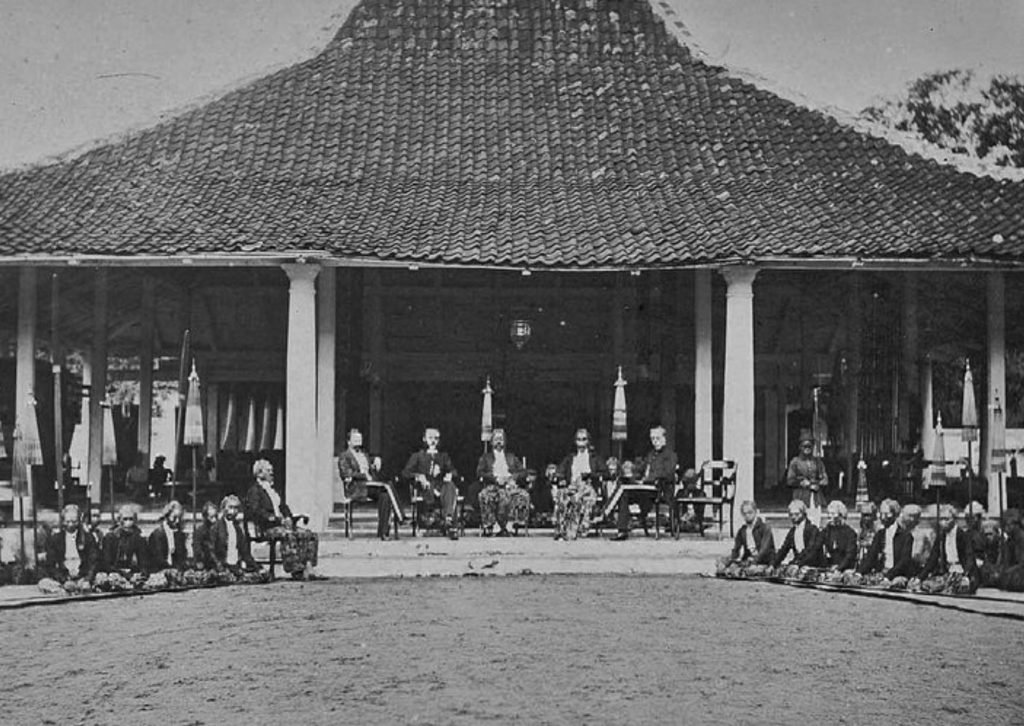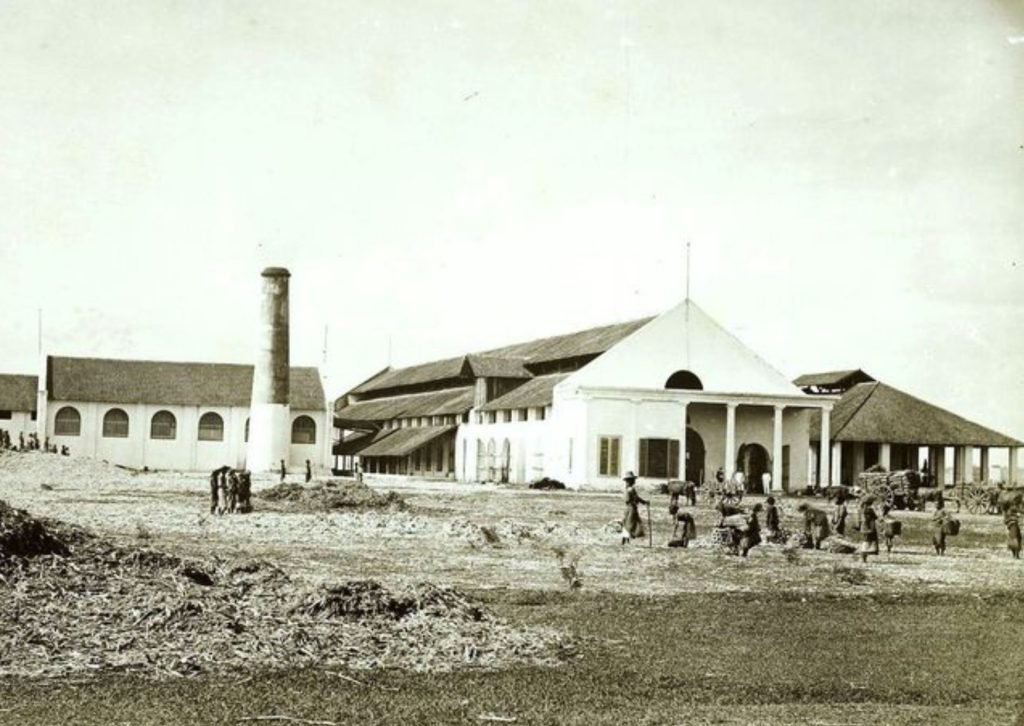Uncategorized
From Trade to Colonization: The Dutch Transformation in Java
Java is the most populous island in Indonesia. From 282.4 million people in Indonesia, 55.93 percent of the population lives on Java. Because it supports more than half of the population and serves as the economic center of Indonesia, Java is equipped with the most advanced infrastructure compared to other regions. Its well-developed facilities, spanning education, transportation, public services, and more, attract many migrants from other islands seeking better opportunities. This progress stems from development efforts that began during the colonial era and have continued to evolve to the present day.
Many Indonesians believe that the Dutch colonized Indonesia for 350 years. However, this perception is somewhat inaccurate, as the Dutch East India Company (VOC) initially came to Indonesia not to colonize, but to engage in trade, driven by capitalist motives. Experts argue that the colonial era was marked by a complete system of governance. If we count from the fall of the VOC until it was replaced by Dutch colonial rule from 1800 to 1942, the Dutch colonized Indonesia for 142 years. Some historians argue that the Dutch initially had no intention of colonizing the Archipelago. The roots of colonization lay within the society itself.
The arrival of Europeans was initially driven by the search for spices, which was triggered by the fall of Constantinople to the Turks. This event disrupted trade routes from Asia to Europe, causing a shortage of spices. European countries, including the Netherlands, sent trading ships in search of these valuable goods. Johan van Oldenbarnevelt founded the Dutch East India Company (VOC) in 1602.

The Dutch arrived in the Archipelago at the end of the 16th century. At the time, their aim was trade. The VOC established its first trading post in Java in 1603, located on the northwestern coast of Banten. After conquering the fishing port of Jayakarta, the VOC built a fortified city called Batavia in 1619. When the Dutch first occupied Java, they were originally hesitant to govern, stepping in only when requested to intervene or when provoked. However, at that time, Java consisted of many kingdoms, and their leaders were often in conflict with one another. Java was fragmented and divided, with tensions between the Javanese nobility even greater than their hatred for foreigners. This division made Java vulnerable to VOC intervention.
The political situation in Java became complex due to the many competing kingdoms. Rulers from coastal areas would try to expand their power inland to access more resources, while inland rulers fought against these expansion efforts. Often, it was the inland rulers who ended up dominating the coastal regions. Leaders sought to assert their power by maintaining their populations, while the people could leave their territories if dissatisfied with their rulers. These migrants were often welcomed by other rulers looking to expand their power through population.
The Mataram Sultanate was founded in the 16th century in Java and reached its peak under the reign of Sultan Agung Hanyakrakusumo (1613-1645). Sultan Agung’s reign coincided with the arrival of the Dutch in Java. Under his leadership, he was determined to expel foreign powers from Mataram. He led a resistance against the VOC in Batavia, but it ended in failure after the Dutch burned Mataram’s food barn, weakening the Mataram forces, which then forced them to retreat from Batavia.

After Sultan Agung’s death, Mataram no longer had the same ambition to expel foreign intervention. His successor, Amangkurat I, even sought Dutch assistance to overcome the Trunajaya rebellion against Mataram. The Dutch became involved in Javanese politics, playing the role of mediator. This has led some historians to justify European intervention as a source of peace and order (Dutch: rust en orde).
When Mataram was in power, Javanese regents who were dissatisfied with Mataram’s rule began to approach the Dutch authority in Batavia. They voiced their grievances against Mataram. At first, the VOC showed little interest in political expansion. By 1680, Batavia’s authority extended only to Sumenep, Pamekasan, Cirebon, and Semarang as subordinate regions. However, in 1704, when rulers along the northern coast opposed the centralization policies of the Kartasura court, they sent tributes and sought the VOC’s protection. This marked the VOC’s transformation into a political and military force in these areas.
The VOC initially derived most of its profits from the spice trade. By the mid-18th century, Chinese tea and Indian textiles became the main trade commodities, while pepper, coffee, cinnamon, sugar, and tin became secondary goods. As the textile trade from India and tea trade from China declined, compounded by poor harvests of pepper and spices, the VOC increasingly depended on Java as its primary source of income in the East.

Java emerged as the primary supplier of commodities for Dutch trade. Between 1780 and 1790, goods that were easily cultivated and produced in Java, such as sugar and coffee, saw soaring prices due to a decline in supplies from Latin America and the Caribbean, which had previously been the main production centers during the Napoleonic Wars. The Dutch regarded Java as a “valuable island” (onschatbare eiland), and by the early 19th century, it had become the cornerstone for revitalizing the Dutch economy in the Dutch East Indies.
The Cultivation System (Cultuurstelsel) imposed by the Dutch forced villagers in Java to produce export crops for the colonial government. Initially, sugar production in Java was minimal, thus the Dutch required villages around sugar factories to allocate up to one-fifth of their land to plant sugar cane. Europens were prohibited from renting or purchasing land and establishing private factories hence sugar production was carried out through the Cultivation System. In villages outside the system, the economy remained focused on rice cultivation.
At its peak, the Cultivation System provided more than a third of the Dutch government’s income and 4% of the Netherlands’ GDP. This made Java one of the most financially profitable colonies in the world. As Java became the most profitable Dutch colony, the Dutch invested in developing extensive infrastructure around their factories. Researchers have observed that rural areas near these factories exhibited higher levels of human capital.
References:
Dell, M. & Olken, B. (2020). The development effects of the extractive colonial economy: The Dutch cultivation system in Java. The Review of Economic Studies, 87 (1), 164–203. https://doi.org/10.1093/restud/rdz017
Kian, K. (2008). How strangers became kings. Indonesia and the Malay World, 36(105), 293-307. http://dx.doi.org/10.1080/13639810802268064
Muhamad, N. (2024, August 8). Ada 282,4 juta penduduk Indonesia semester I 2024, separuhnya di Jawa. Databoks. Retrieved from https://databoks.katadata.co.id/demografi/statistik/66b43fdecaeac/ada-2824-juta-penduduk-indonesia-semester-i-2024-separuhnya-di-jawa#:~:text=%E2%80%9C(Jumlahnya)%20naik%20naik%201.752,139.907.921%20jiwa%20penduduk%20perempuan
Savitri, D. (2023, May 21). Apakah benar Indonesia dijajah Belanda 350 tahin? Begini faktanya. Detik.com. Retrieved from https://www.detik.com/edu/detikpedia/d-6730659/apakah-benar-indonesia-dijajah-belanda-350-tahun-begini-faktanya#:~:text=Bila%20menghitung%20mundur%20selama%20350,pada%20tahun%201596%20di%20Banten


